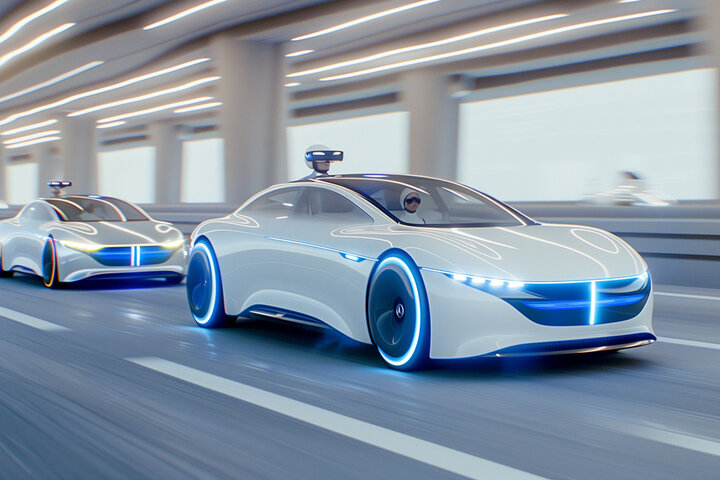Open up a car from years gone by, and you’ll likely be confronted with a jumble of metal, belts, and grease-covered parts, a machinery symphony that powered the glory days of driving. Times are changing though. These days, that familiar roar of the gasoline engine is being pushed aside by quiet engines, chips, sensors, and thin battery packs.
What happens under the hood of tomorrow’s vehicles isn’t just new, it’s revolutionary. And for automobile enthusiasts who enjoy older engineering, this change may raise the question, do I hold onto or sell my classic car, particularly with new technology reining in incredible advancements at warp speed.
Let’s take a closer look at what really powers the cars of the future.

Electric Motors
Those are behind us now when those complicated internal combustion engines (ICE) dominated the auto industry. Electric motors have the potential of being the new standard, a cleaner, less complicated, and more efficient way of propelling the vehicle.
While gasoline engines are accompanied by hundreds of moving components, electric motors do not have so many pieces, meaning fewer maintenance procedures, less noise, and higher reliability. Tesla, Rivian, and even traditional manufacturers like Ford and Mercedes are spending billions on electric vehicle (EV) platforms.
What’s in the hood? Instead of a sooty engine block, there’s likely a thin electric drive module consisting of the motor, inverter, and gear reduction unit. This small module propels the wheels with instant torque, producing goosebump-inducing acceleration without the roar of an engine.
Batteries
Batteries are the lifeblood of electric vehicles, and they’re evolving very rapidly. lithium-ion batteries, which are lighter and store more energy than their predecessors, power most EVs today. Behind the hood (or, more accurately, beneath the floor), these battery packs now drive everything from the air conditioner to the drivetrain.
Then there are solid-state batteries. These charge quicker, provide greater energy density, and have fewer opportunities to catch on fire—one of the only negatives about current lithium-ion technology. Toyota, BMW, and other automakers are racing to sell solid-state batteries in the next few years, and when they do, EVs will be even more enticing.
Software and Sensors
The cars of tomorrow are rolling computers. As the physical engine evolves, it’s the electronics and software that are actually rewriting performance and safety.
Modern cars sport a variety of sensors: radar, LiDAR, ultrasonic sensors, and high-def cameras. They combine to enable features like adaptive cruise control, lane-keeping assistance, and collision avoidance. Advanced Driver Assistance Systems (ADAS) are becoming the norm very quickly, and they rely heavily on onboard software.
Over-the-air (OTA) upgrades—like the updates we get on phones—are a possibility even for cars today. This means your vehicle can update or gain new features when you sleep, without a trip to the garage. Companies like Tesla, Hyundai, and GM are leading the charge.
Vehicle Control Units
Instead of a pile of independent control units (like the engine’s ECU or body’s BCM), next-generation vehicles are headed toward a single computer system. Think of it as a brain that learns everything the car does in real-time.
This revolution in design makes it possible to manage data more efficiently, response faster, and integrate amenities like autonomous driving, entertainment, and live diagnostics more smoothly. The big three today include Nvidia, Qualcomm, and Intel, which provide the processors and the brains that will drive the automobile of the future.
Cooling Systems and Heat Pumps
Electric isn’t cool—literally. EVs do have thermal management systems, though, but they work differently than ICE’s. They use liquid-cooled batteries and heat pumps to manage temperatures rather than engine coolant circulating through radiators.
Heat pumps work great in both hot and cold temperatures. They allow EVs to manage cabin comfort and battery output without using extra power. The improved the battery chemistry, the improved thermal management is, which keeps performance consistent in any condition.
Regenerative Braking and Energy Recovery
Another smart feature buried in the heart of future cars is regenerative braking. It harvests energy lost during braking and sends it back to the battery. It’s an important factor in making EVs more efficient, especially in city driving with lots of stop-and-go.
Drivers even get to choose how much regenerative braking they like—some cars offer “one-pedal driving” such that taking the foot off the accelerator slows the car so much that the brake pedal is hardly ever pressed.
Bye-Bye to Oil, Hello Code
Mechanics are becoming software technicians. As automobiles of the future leave behind mechanical sophistication and advance toward electronic cleverness, the venerable engine block is being replaced by modular electronics, lightweight materials, and zero-emission systems.
The future garage is more likely to resemble a data lab than a repair shop.
Conclusion
As the automotive world enters a new era of mobility, what’s in the hood is no longer just about mechanical muscle, it’s about brains, efficiency, and sustainability. The fuel-to-data, piston-to-processor revolution is one of the most dramatic in the history of automobiles.
Tomorrow’s cars are not merely automobiles – tomorrow’s cars are ecosystems, redefining the whole concept of transportation. The question is not anymore how we move but how much we can push this technology.
